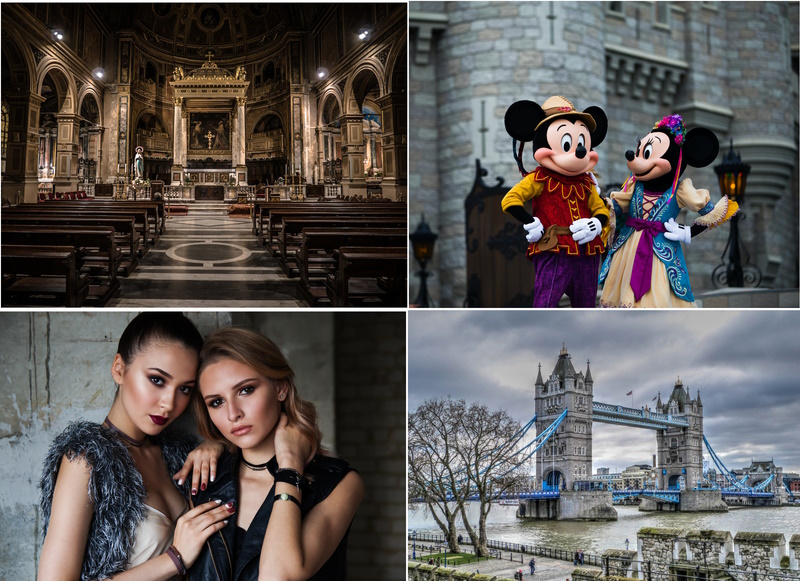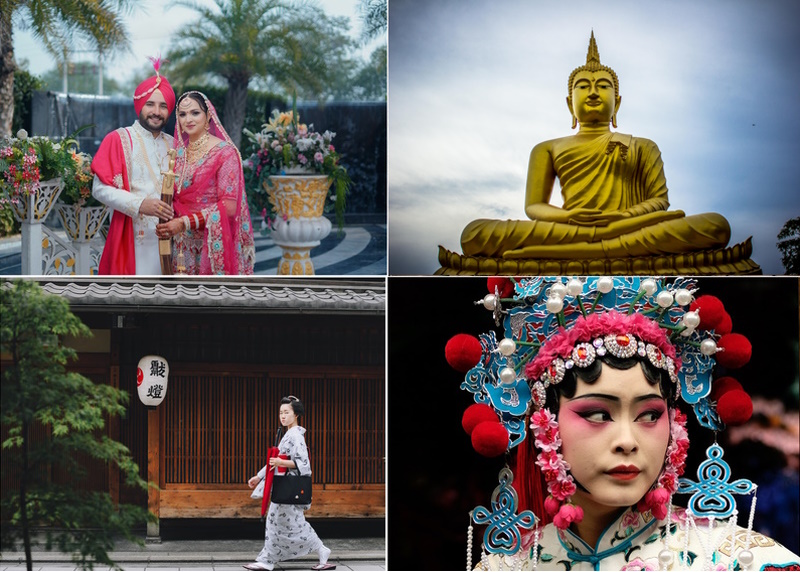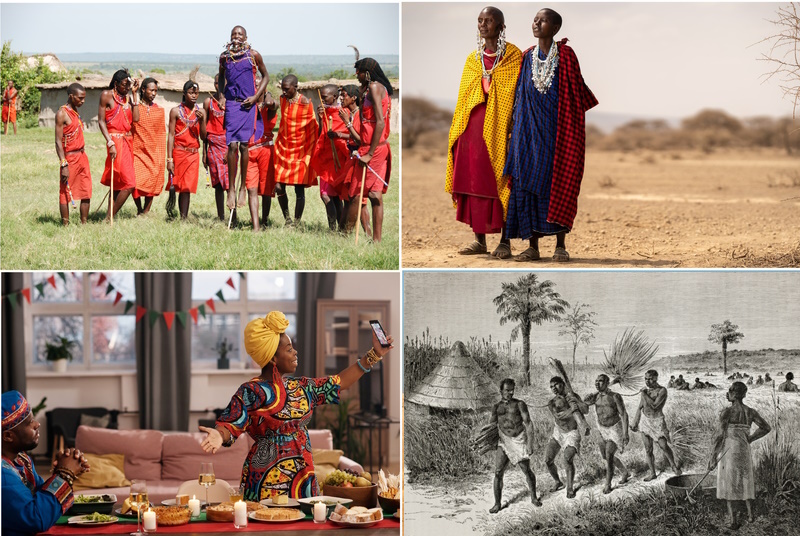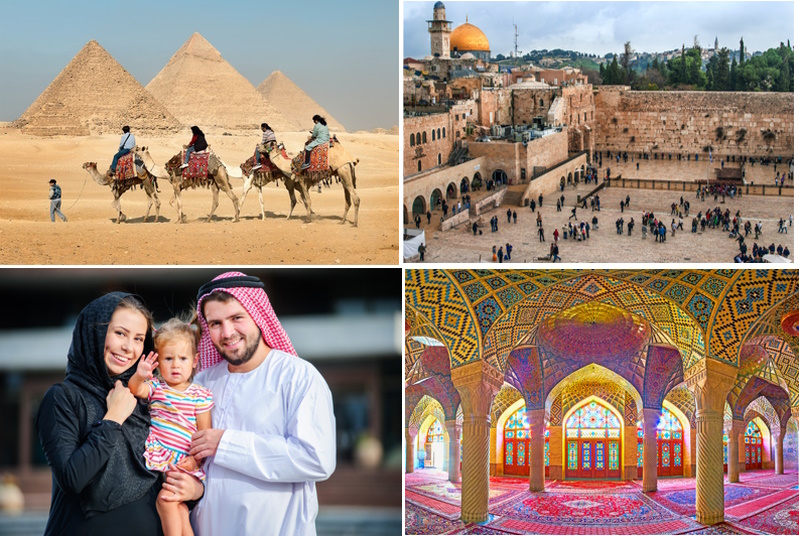Colors can make us feel different things and have different meanings, depending on where we are, who we are, and how we interpret them in different cultures. Knowing what colors mean is important because it helps us communicate and express ourselves in the right way, and it helps us understand what others are trying to say with color too.
Experts like anthropologists, psychologists, designers, and artists have been studying color for a long time because it’s not just about how things look – colors also have a lot of information and meaning built into them that comes from our culture and social environment.
For instance, the color red might mean love and excitement to some people, but to others, it could mean danger or even death.

Photo by Pixabay
Similarly, the color white can represent purity and innocence in some cultures, while in others, it can be associated with mourning and death.
Understanding color meanings and symbolism is crucial in various fields, such as art, design, and marketing. Artists and designers often use color to convey certain emotions or ideas, and understanding the cultural connotations and associations of different colors can help them effectively communicate their message.
In marketing, colors can be used to influence consumer behavior and perception, as different colors can evoke different emotions and associations in people.

Photo by PUSCAU DANIEL FLORIN
Color meaning & color symbolism
Color meaning and color symbolism are related concepts, but they are not the same thing.
Color meaning:
It refers to the common or traditional interpretations of different colors within a particular culture or context. For example, in Western culture, the color red is often associated with love, passion, and excitement, while in Eastern cultures, it can be associated with luck and prosperity.
Color meaning is usually based on cultural conventions, historical associations, and individual perceptions and experiences. It can be learned through observation and experience and is often shared and understood within a particular cultural group.
Color symbolism:
On the other hand, color symbolism refers to the use of color to represent or convey a deeper or hidden meaning, often beyond the literal or obvious interpretation of the color. Symbolism can be deliberate or unintentional, and it can be based on cultural, religious, or historical associations or personal interpretations.
For example, the color white can symbolize purity and innocence in some cultures, but it can also represent death and mourning in others. The use of color symbolism can add layers of meaning and complexity to art, literature, and other forms of expression.

Photo by Pok Rie
Why color is important in photography?
Color is an essential element of photography as it has a significant impact on the emotional and aesthetic appeal of the image. Color can convey different moods, emotions, and meanings, making it a powerful tool for visual communication. It can evoke various emotions such as happiness, sadness, excitement, or calmness, and can help convey the photographer’s intended message to the viewer.
Color also helps to differentiate various elements of a photograph, such as the foreground, background, and subject. The use of contrasting colors can help to create depth and interest in the image, guiding the viewer’s eye to the main subject and creating a sense of balance and harmony in the composition.
Furthermore, color can help to establish a particular mood or atmosphere in a photograph, whether it is a warm and cozy feeling, a serene and peaceful mood, or a dramatic and intense tone. The use of color can also help to convey cultural or historical contexts, adding another layer of meaning and symbolism to the image.

Photo by stein egil liland
How different cultures interpret colors
Different cultures interpret colors differently, and the meanings associated with colors can vary widely across societies. For example, while in Western cultures, white is often associated with purity and innocence, it is a color of mourning in some Asian cultures. Similarly, while in the Western context, red is often associated with love and passion, in Chinese culture, it is a color of luck and prosperity.
Therefore, it is essential to consider the cultural context when using colors in photography, as the meanings associated with colors can significantly impact how the image is interpreted by the viewer.
1. Color Interpretations in Western Cultures

-
The symbolism of color in Western cultures
There are some general symbolic meanings that are commonly associated with different colors in Western cultures. Here are some examples:
| Color | Western Culture |
|---|---|
| Red | Love, passion, danger, anger, stop |
| Blue | Trust, loyalty, sadness, calmness |
| Yellow | Happiness, joy, caution, cowardice |
| Green | Nature, growth, harmony, envy |
| Purple | Royalty, luxury, power, mystery |
| Black | Death, mourning, evil, power |
| White | Purity, innocence, peace, surrender |
| Orange | Energy, warmth, joy, creativity, autumn |
| Pink | Love, sweetness, innocence, youth, femininity |
| Brown | Stability, earth, simplicity, reliability |
| Gold | Wealth, prosperity, luxury, success |
| Silver | Modernity, elegance, sophistication, glamour, high-tech |
| Gray | Neutrality, formality, sophistication, security |
-
How color is used in Western photography
Color is used in Western photography in a variety of ways to create different effects and convey different meanings. Here are some examples:
| Color | Western Culture |
|---|---|
| Red | Used to create a bold and eye-catching contrast, evoke passion and excitement in fashion, product, and portrait photography. |
| Blue | Used to create a calm and soothing atmosphere in landscape, nature, and seascape photography, and to evoke sadness or loneliness in portrait photography. |
| Yellow | Used to create a warm and cheerful atmosphere in fashion, product, and portrait photography, and to highlight the subject. |
| Green | Used to create a natural and organic atmosphere in landscape, nature, and wildlife photography, and to signify envy or greed in product and advertising photography. |
| Purple | Used to create a regal and luxurious atmosphere in fashion, product, and portrait photography, and to evoke mystery or spirituality in fine art photography. |
| Black | Used to create a dramatic and moody atmosphere in fine art, fashion, and portrait photography, and to evoke power or sophistication in product and advertising photography. |
| White | Used to create a clean and minimalistic atmosphere in fashion, product, and portrait photography, and to evoke purity or innocence in fine art photography. |
-
How Western cultures have influenced the use of color in other cultures
Western cultures have had a significant influence on the use of color in other cultures, particularly in the realm of photography and design. This influence can be traced back to the colonial period when Western powers exerted political, economic, and cultural dominance over many non-Western societies.
One of the most notable examples of Western influence on color use in other cultures is in the realm of fashion. Western fashion designers and brands have been able to establish themselves as global trendsetters, with their use of colors and styles influencing fashion trends in other cultures around the world. For example, the use of bold and vibrant colors in Western fashion has inspired similar trends in many non-Western cultures.
Similarly, Western photographers and designers have been able to introduce new techniques and styles to other cultures, which have influenced the use of color in photography and design. For example, the use of bold and contrasting colors in graphic design, which originated in the West, has now become a global trend.
However, it is important to note that the influence of Western culture on other cultures has not always been positive or beneficial. In some cases, the adoption of Western color trends and styles has led to the erasure of local cultural traditions and practices.
2. Color Interpretations in Eastern Cultures

-
The symbolism of color in Eastern cultures
Colors in Eastern cultures also hold symbolic meanings and interpretations, which can vary widely depending on the cultural context. Here are some common color interpretations in Eastern cultures:
| Color | Eastern Culture |
|---|---|
| Red | Good fortune, joy, celebration, prosperity |
| Blue | Healing, tranquility, wisdom, harmony |
| Yellow | Wisdom, royalty, prosperity, happiness |
| Green | Life, renewal, youth, energy, growth |
| Purple | Spirituality, nobility, wealth, prosperity |
| Black | Power, formality, mystery, evil, death |
| White | Death, mourning, humility, purity, cleanliness |
| Orange | Good luck, happiness, prosperity, spirituality |
| Pink | Love, happiness, good health, femininity, youth |
| Brown | Earth, humility, reliability, comfort |
| Gold | Wealth, good fortune, success, power, illumination |
| Silver | Wisdom, clarity, intuition, moon, feminine power |
| Gray | Peace, humility, modesty, stability, wisdom |
-
How color is used in Eastern photography
Colors play an essential role in Eastern photography and are often used to convey meaning and emotion. Here are some examples of how color is used in Eastern photography:
| Color | Eastern Culture |
|---|---|
| Red | Used to signify good fortune, happiness, and celebration in traditional wedding photography and festival events. |
| Blue | Used to signify spirituality, wisdom, and harmony in nature, architecture, and traditional clothing. |
| Yellow | Used to signify royalty, wealth, and prosperity in traditional dress, architecture, and festival events. |
| Green | Used to signify youth, energy, and growth in nature, traditional clothing, and festival events. |
| Purple | Used to signify spirituality, nobility, and prosperity in traditional dress, architecture, and festival events. |
| Black | Used to signify power, formality, and elegance in traditional dress and ceremonial events, and to evoke mystery or evil in horror photography. |
| White | Used to signify death, mourning, and purity in traditional dress and ceremonial events, and to evoke humility or cleanliness in nature photography. |
-
How Eastern cultures have influenced the use of color in other cultures
Eastern cultures have had a significant impact on the use of color in other cultures, particularly in areas such as fashion, design, and art. Here are some examples of how Eastern cultures have influenced the use of color in other cultures:
-
- Color combinations: Eastern cultures have traditionally used bright and bold color combinations, which have influenced fashion and design trends in the West. For example, the bright and contrasting colors used in Indian textiles and fashion have become popular in Western fashion and home décor.
- Natural pigments: Eastern cultures have used natural pigments made from plants and minerals for centuries. This trend has influenced the use of natural dyes and pigments in other cultures, particularly in the fashion industry, where natural dyes are often used in an eco-friendly and sustainable fashion.
- Color symbolism: The meanings and symbolism of colors in Eastern cultures have influenced the use of color in other cultures. For example, the use of red in Chinese and Indian cultures to represent good luck and prosperity has influenced the use of red in Western marketing and branding.
- Cultural exchange: As a result of globalization and increased cultural exchange, Eastern cultures have become more accessible to people in other parts of the world. This has led to a greater appreciation for the use of color in Eastern art and design, which has influenced the use of color in other cultures.
Overall, the influence of Eastern cultures on the use of color in other cultures has been significant and ongoing. As cultures continue to interact and exchange ideas, it is likely that we will continue to see the influence of Eastern color traditions in other parts of the world.
3. Color Interpretations in African Cultures

-
The symbolism of color in African cultures
Color plays an important symbolic role in many African cultures, with different colors often carrying specific meanings and messages. While the symbolism of colors can vary among different tribes and ethnic groups, there are some general meanings that are widely recognized across the continent. Here are some examples:
| Color | African Culture |
|---|---|
| Red | Vitality, blood, death, danger, protection, fertility |
| Blue | Spirituality, immortality, fertility, prosperity, water |
| Yellow | Mourning, jealousy, caution, sickness, disgrace |
| Green | Healing, harmony, balance, nature, hope |
| Purple | Mourning, death, royalty, wealth, honor |
| Black | Maturity, power, healing, evil, magic |
| White | Purity, truth, happiness, death, ritual |
| Orange | Vitality, endurance, generosity, healing, hospitality |
| Pink | Gratitude, healing, love, femininity, hope |
| Brown | Healing, home, strength, grounding, connection |
| Gold | Royalty, wealth, fertility, happiness, success |
| Silver | Spirituality, healing, moon, wealth, transformation |
| Gray | Strength, resilience, wisdom, security, neutrality |
-
How color is used in African photography
Color is used in African photography in various ways, depending on the specific context and purpose of the photograph.
Cultural and traditional attire: In many African cultures, clothing, and accessories are often brightly colored and highly decorative. Photographers may use color to highlight the intricate designs and patterns of these garments and to celebrate the cultural richness of their subjects.
African photographers have a long history of using their work to address social and political issues, such as colonialism, apartheid, and human rights. Color may be used to draw attention to specific details or symbols within the photograph, or to evoke a particular emotional response in the viewer.
Here are a few examples:
| Color | African Culture |
|---|---|
| Red | Used to represent vitality, strength, and passion in cultural and traditional ceremonies and rituals. |
| Blue | Used to represent purity, protection, and communication in traditional dress and ceremonial attire. |
| Yellow | Used to represent energy, sunshine, and warmth in nature, food, and traditional clothing. |
| Green | Used to represent healing, balance, and nature in traditional dress and ceremonial attire. |
| Purple | Used to represent royalty, wealth, and honor in traditional attire and ceremonial events. |
| Black | Used to represent maturity, power, and magic in traditional dress and cultural rituals. |
| White | Used to represent purity, truth, and happiness in traditional dress and ceremonial attire. |
-
How African cultures have influenced the use of color in other cultures
African cultures have had a significant influence on the use of color in other cultures around the world. Here are a few examples:
-
- Fashion: African fashion, with its vibrant colors and bold patterns, has inspired designers and fashionistas worldwide. From brightly colored Ankara prints to intricate beadwork, African fashion has made its mark on the global fashion scene and influenced the use of color in clothing and accessories.
- Art: African art, with its bold colors and striking shapes, has inspired artists worldwide. The abstract and expressive nature of African art has influenced the use of color in modern art, from the bright and bold colors of pop art to the textured and layered colors of abstract expressionism.
- Interior design: African decor, with its use of warm, earthy tones and bold patterns, has influenced the use of color in interior design. From mud cloth textiles to woven baskets, African-inspired decor has become a popular trend in home decor, with designers incorporating rich, warm colors and natural materials into their designs.
4. Color Interpretations in Latin American cultures Cultures

-
The symbolism of color in Latin American cultures
Colors play an essential role in Latin American cultures, and they are often used to convey meaning and symbolism in art, fashion, and everyday life. Here are some examples of the symbolism of color in Latin American cultures:
| Color | Latin American Culture |
|---|---|
| Red | Used to symbolize life, blood, love, and passion in street photography and cultural celebrations like the Day of the Dead. |
| Blue | Used to symbolize religious devotion, patriotism, and peace in street photography and cultural events like Carnival. |
| Yellow | Used to symbolize joy, optimism, and hospitality in street photography and cultural events like the Day of the Dead. |
| Green | Used to symbolize growth, nature, and fertility in street photography and cultural celebrations like Carnival. |
| Purple | Used to symbolize royalty, luxury, and mystery in street photography and cultural celebrations like the Day of the Dead. |
| Black | Used to symbolize mourning, death, and rebellion in street photography and cultural events like Carnival. |
| White | Used to symbolize purity, innocence, and surrender in street photography and cultural events like the Day of the Dead. |
-
How color is used in Latin American photography
Color is a key element in Latin American photography, and photographers use it in a variety of ways to capture the essence of the region and its people. Whether through bold and bright colors or subtle and nuanced tones, color plays a vital role in the visual language of Latin American photography. Here are some examples:
| Color | Latin American Culture |
|---|---|
| Red | Life, blood, love, passion, danger, revolution, fiesta |
| Blue | Religious devotion, loyalty, patriotism, harmony, peace |
| Yellow | Energy, sunshine, warmth, optimism, wealth, hospitality |
| Green | Hope, growth, nature, fertility, envy, money |
| Purple | Royalty, luxury, power, mystery, mourning, creativity |
| Black | Mourning, death, underworld, evil, rebellion |
| White | Purity, innocence, peace, surrender, joy, hope |
| Orange | Joy, warmth, energy, creativity, enthusiasm, harvest |
| Pink | Love, femininity, sweetness, innocence, youth |
| Brown | Earth, stability, reliability, comfort, simplicity |
| Gold | Wealth, success, prosperity, luxury, illumination |
| Silver | Modernity, sophistication, glamour, high-tech, elegance |
| Gray | Maturity, security, formality, sophistication, wisdom |
-
How Latin American cultures have influenced the use of color in other cultures
Latin American cultures have had a significant impact on the use of color in other cultures, particularly in the fields of art, fashion, and design. Here are some ways in which Latin American cultures have influenced the use of color in other parts of the world:
-
- Bold color palettes: Latin American art and design are known for their use of bold and vibrant colors. This influence can be seen in the work of many contemporary artists and designers, who use bright colors to create visually striking and attention-grabbing designs.
- Textile traditions: Latin America is home to a rich tradition of textile art, which often incorporates colorful threads, yarns, and fabrics. This tradition has influenced the use of color in textile art and fashion around the world, inspiring designers to experiment with bold and vivid colors in their work.
- Celebration of diversity: Latin America is a diverse region, home to a variety of cultures, traditions, and languages. This celebration of diversity is reflected in the vibrant and colorful art and design of the region, and it has inspired many artists and designers around the world to embrace the use of color in their work as a way to celebrate diversity and promote inclusivity.
- Emphasis on emotion and expression: Latin American cultures often place a strong emphasis on emotion and expression, which is reflected in the use of color in art and design. This focus on emotion and expression has inspired many artists and designers around the world to use color as a means of conveying mood, feeling, and meaning in their work.
5. Color Interpretations in Middle East Cultures

-
The symbolism of color in Middle Eastern cultures
Colors hold deep symbolic meanings in Middle Eastern cultures, and they are often associated with religious, cultural, and social traditions. Here are some common color interpretations in Middle Eastern cultures:
| Color | Middle East cultures |
|---|---|
| Red | Love, passion, sensuality, danger, warning |
| Blue | Protection, tranquility, peace, sadness, mourning |
| Green | Growth, prosperity, fertility, sacred color in Islam, paradise |
| Yellow | Happiness, optimism, wealth, jealousy, envy |
| Purple | Royalty, power, luxury, mourning, death |
| Black | Mourning, death, modesty, piety |
| White | Purity, cleanliness, peace, mourning and death (in Islamic cultures) |
It is important to note that these interpretations can vary depending on the country, religion, and culture in the Middle East. For example, in Iran, blue is often associated with mourning and sorrow, while in Egypt, it is associated with protection and luck. Therefore, it is crucial to understand the cultural and social context when interpreting the meanings of colors in Middle Eastern cultures.
-
How color is used in Middle East photography
Here is a table showing examples of how color is used in Middle Eastern photography:
| Color | Middle East culture |
|---|---|
| Red | Can represent both danger and passion. In some Middle Eastern cultures, it is considered a color of good luck and can be used in weddings or other celebratory events. |
| Blue | Often associated with trust, calmness, and stability. It is also sometimes used to represent purity or divinity. |
| Green | Symbolizes life, growth, and renewal. It is considered a sacred color in Islam and can be found in many mosques and Islamic art. |
| Yellow | Can represent happiness, hope, and prosperity. In some Middle Eastern cultures, it is also associated with jealousy or cowardice. |
| Black | Often used to represent mourning or death. It can also be associated with power, strength, and authority. |
| White | Symbolizes purity, innocence, and peace. It is often used in weddings and other joyous occasions. |
| Gold | Can represent wealth, success, and prosperity. It is often used in jewelry and other decorative items. |
-
How Middle Eastern cultures have influenced the use of color in other cultures
Middle Eastern cultures have had a significant influence on the use of color in other cultures, particularly in art, fashion, and design. Here are a few examples:
-
- Islamic art: Islamic art has a rich tradition of using intricate geometric patterns and vibrant colors, particularly in tile work and calligraphy. These patterns and colors have been adopted and adapted by artists and designers around the world, particularly in the field of interior design.
- Fashion: Middle Eastern fashion, particularly the use of vibrant colors and intricate patterns, has had a significant influence on global fashion trends. From the kaftans and hijabs of traditional dress to the bold, colorful prints of modern fashion designers, Middle Eastern fashion has inspired designers from around the world.
- Architecture: Middle Eastern architecture, particularly the use of colorful mosaics and intricate tile work, has had a significant influence on global architecture. From the blue domes of mosques to the vibrant, ornate designs of traditional homes and buildings, Middle Eastern architecture has inspired architects and designers around the world.
The use of color in Middle Eastern cultures is deeply rooted in tradition, religion, and history. Its influence has spread beyond the region, inspiring artists, designers, and architects around the world to incorporate its rich colors and patterns into their work.
Related posts
Color Harmony In Photography- Things You Need To Know
Thanks for reading, I hope you enjoyed the article, in case you have any questions just drop them below & I will be happy to answer you.
The featured Photo by Anthony
If you enjoy the site, don’t forget to subscribe, we will only inform you when a new article is posted.









Interesting article. The power of color should not be overlooked, for it can influence our emotions, messages and meanings. In addition to varying by culture, the interpretation of colours is highly personal based on who we are and where we come from. It was really easy and nice to read through this article and to learn about the different meanings behind colours.
Thank you for your comment! I completely agree with you that the power of color should not be overlooked. Color is a very important aspect of our daily lives and can have a significant impact on our emotions and perceptions. As you mentioned, the interpretation of colors can also vary greatly depending on individual experiences and cultural backgrounds. I’m glad to hear that you found the article informative and easy to read. If you have any further questions or comments, feel free to let me know!
I found the lists of how the various cultures see each color to be fascinating. This is a case where I have not been exposed to much to these ideas. I lived with native North Americans for a number of years. They did not use colors in clothing they made because of the traditional materials available to them. When someone wore something colorful they were seen as showing off. In my North American culture, I have used blue for cold, red for hot, yellow for cowardice and green for envy. I have not idea why. It is wonderful to know how the world sees colors.
Thank you for sharing your thoughts! It’s fascinating to hear about your experiences living with native North Americans and how their cultural traditions influenced their use of colors. It’s also interesting to note the differences in the ways that colors are interpreted across different cultures, as well as the personal associations that we may have with certain colors. As you mentioned, some of the associations we have with colors in our own culture may not be universal, and it’s important to keep this in mind when communicating with people from different backgrounds. I’m glad that you found the article informative and that it helped you to gain a better understanding of how the world sees colors. If you have any more questions or comments, feel free to let me know!